Mohs Hardness of Gemstones
When you are purchasing a gem for jewelry use one of the important
considerations is the durability of that specific gemstone. One of the
main measures of durability in gems is the "Mohs hardness" which is a
scale developed by Freidrich Mohs in 1812.
In general terms a gem of 7 or greater hardness is considered suitable for ring wear because it is as hard or harder than quartz which is one of the most common forms of "dust" that the gem might encounter. Thus if the gemstone is as hard or harder than quartz it is unlikely to scratch easily with common dust rubbing against it. For engagement rings a hardness of 8 or greater is usually recommended for added durability since the gem will likely be worn daily.
Softer gems are often put in pendants where they run less risk of bumping into something and becoming damaged. Some designers also put them in rings, taking extra care in the design to protect the gem as much as possible and also cautioning their customers about care in wearing their ring. To protect your gem it is best to avoid things such as gardening, dish washing, remodeling and other more strenuous forms of activity while wearing your rings. In most cases this simple care will keep them beautiful for the next generation to enjoy.Here is a table of common gemstones and their mohs hardness to give you an idea of how this hardness scale works.

|
Diamond Mohs hardness of 10 |
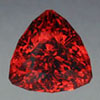
|
Garnet Mohs hardness of 6.5-7.5 (Depending on variety.) |
|

|
Sapphire Mohs hardness of 9 |
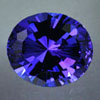
|
Tanzanite Mohs hardness 6-7 |
|
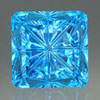
|
Topaz Mohs hardness of 8 |
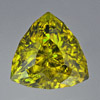
|
Sphene Mohs hardness 5-5.5 |
|

|
Aquamarine (And others of the Beryl family) Mohs hardness 7.5-8 |
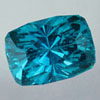
|
Apatite Mohs hardness 5 |
|

|
Tourmaline Mohs hardness 7-7.5 |

|
Rhodochrosite Mohs hardness 4 |
|
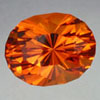
|
Quartz family (Citrine, Amethyst, etc.) Mohs hardness of 7 |
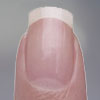
|
Your fingernail Mohs hardness of about 2.5 |
It is interesting to note that the Mohs scale is not linear,
IE a gem of 8 in hardness is not twice as hard as one of 4 in hardness.
In most cases (especially at the upper end of the scale) each step up
the mohs scale means a much greater hardness. Topaz at 8 on the Mohs
scale for example is two times as hard as quartz which is a 7 on the
scale.
Other factors also come into play when considering gemstone
durability, such as whether or not the gem has distinct cleavage.
"Cleavage" in gemstones is a weakness in one or more directions of the
crystal that can allow the gem to cleave or "split" if struck just
right. This is why some movies show diamonds being "struck" to split
them. If you would like further information about the durability of a
gem you are considering please contact us by phone or email.
